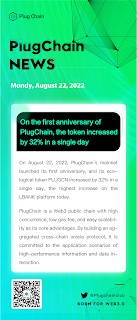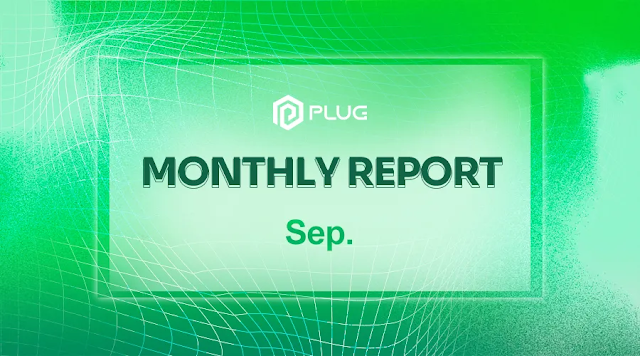Who can catch up with Chainlink and become a dark horse in the oracle?
This article is excerpted from Chinese community WeChat Official Account——Plug Universe
Preface: The oracle machine in the computer field
was proposed by Turing. On the basis of Turing Machine, an Oracle black box is
added to form the oracle machine Oracle Machine. The so-called Oracle is an
entity that can answer a specific set of questions. Information can be input
into the Turing machine system to complete the operation.
However, in the blockchain oracle is a system that
can provide external data sources for smart contracts. From the analysis of the
traditional technical architecture, the oracle machine is the middleware
(middleware) that connects the smart contract and the outside world of the
blockchain, and is an important infrastructure of the blockchain. The role of oracle is to provide data information for smart contracts in
the blockchain. So, Many people have this opinion that a blockchain without
oracles is like an internet without a network. If there is no Oracle, the smart
contract can only use the data generated on the chain, and cannot use external
data.
After the market test,
oracle is becoming a pivotal sector in the encryption field.
01. DeFi: a catalyst for decentralized oracles
With the exploration of the encrypted world by industry personnel, DeFi,
which was born from the extreme integration of traditional finance and
blockchain technology, set off a 2020 encryption frenzy, making the data
dependence between different protocols also strengthened, and the oracle
machine has become an important part of the blockchain. infrastructure. The
oracle machine can overcome the problem of data lack of external connections
and provide a perfect solution: data can be obtained from outside the
blockchain and transmitted to the blockchain, so that smart contracts and
applications can use this information.
The oracle machine not only provides the delivery mechanism for the data
transmitted on the chain, but also serves as the verification mechanism
required to ensure the high integrity of the data. If the smart contract is to
retain end-to-end certainty, the oracle mechanism needs to be as safe and
reliable as the underlying blockchain, because the input of the oracle data directly
determines the output of the consumption smart contract.
Therefore, the oracle mechanism cannot be a single centralized node, as
this would introduce a single point of failure, such as node corruption or
offline. This would defeat the whole purpose of using a blockchain network
consisting of thousands of nodes. In addition, the mechanism of the oracle
should not rely on a single data source, because the data source may provide
wrong data and/or be offline.
The birth of decentralized oracles has accelerated the market demand.
Although some software oracles, hardware oracles, and centralized oracles have
appeared on the market, decentralized oracles (also known as oracles with a
distributed consensus mechanism) are more reliable, mainly from multiple rather
than single Data is obtained from external sources.
Despite its shortcomings, decentralized oracles operate relatively
inefficiently. But the decentralized oracle machine can solve the failure of a
single node. For risk control, most DeFi applications prefer to run on
decentralized oracles.
02. PlugChain: new public chain & for Web3.0
As we all know, the most popular decentralized
oracle machine is Chainlink. As a decentralized oracle, it provides data
generated in the real world to the blockchain in a more secure way. Besides
Chainlink, There
are still many public chains that focus on oracle machines! The standout is PlugChain.
Like Chainlink, PlugChain is also a decentralized
oracle. The difference is that PlugChain is a public chain that focuses on
aggregated cross-chain Oracle. How to ensure the authenticity and fairness of
data? After receiving the data demand, multiple nodes in the PlugChain
distributed node network will request data from multiple external data sources,
and then each node will send the collected data to the oracle contract on the
chain for data aggregation. The contract will review the collected data, and
after removing outliers, take an average data and send it to the data demander.
In order to prevent the trust problem of the
single-node oracle machine, multiple nodes are required to jointly perform the
request processing of the oracle machine data. The problem of data
inconsistency caused by multiple nodes must be aggregated at this time. Among
them, commonly used aggregation algorithms include BFT consensus algorithm or
threshold signature algorithm, etc., while PlugChain uses threshold signature
algorithm.
Threshold signature is a cryptographic technology
based on secure multi-party computation (MPC), and its characteristic is that a
signature must be generated by a private key. The private key will not be
mastered by anyone, and will be divided into many "fragments". These
fragments can be held by many people at the same time, and then through a set
of MPC protocols, it is guaranteed that these fragments do not need to be put
together to directly generate a legal one. sign. Its advantage is that the
signature is generated through the off-chain MPC protocol, and the result is a
standard signature. Another advantage is that the threshold signature strategy
is off-chain, so it is more secure, and it avoids the risk of the contract
being hacked.
Compared with Chainlink, although PlugChain is
slightly inferior in ecological deployment, it still has its own innovations in
technology. The decentralized oracle network is currently the core function of
PlugChain, and its innovative cross-chain interaction design is impressive.
This allows PlugChain to efficiently solve the information interaction between
the networks of many independent blockchains like Cosmos, and can also nest the
ecological scenarios of multiple mainstream public chains such as BSC, Solana,
Cosmos, Heco, etc., and provide modularization Its underlying components can
practically support global commercial-level application networks.
03. Web2.0 transition Web3.0 transformation, technology is the key!
In order to provide the operability of the public chain, PlugChain adopts
asynchronous sharding technology. All sharding block structures are similar to
the consensus protocol, so that data can be seamlessly exchanged between
different blockchains, as if there is no boundary. Realize dynamic and
unlimited expansion as the number of shards changes. Since the shards on
PlugChain are not new chains, but single or multiple smart contracts, such
contracts can run a more optimized execution environment for specific use
cases.
This optimized execution allows composability across shards, avoiding
bridging liquidity, third-party liquidity providers, fragmented liquidity, clumsy
developer experience, additional network relays, or complicated user
experience. In addition, PlugChain also integrates Ripple's InterLedger
protocol and the concept of Polkadot's secondary chain/side chain, and
innovates cross-chain intercommunication under state and asset sharding.
Such expansion capabilities and cross-chain composability undoubtedly bring
unparalleled user experience and developer experience. This provides a
technical barrier for PlugChain, a public chain rookie focusing on aggregated
oracle subdivisions, and also enables PlugChain to realize It is ready for the
landing of global commercial application scenarios.
PlugChain supports global business applications, simplifies the operation
process used by enterprises, and reduces the cost of use, so the technical team
provides customizable functional modules. PlugChain can quickly formulate
corresponding modules for different business scenarios, and has better elastic
support for different business blockchains, so as to meet the specific business
needs and governance needs of various industries, and greatly simplify the
project. The technical process of the chain enables traditional Web2.0
enterprises to better complete the transformation and transformation of the
Web3.0 business form.
Conclusion: The oracle machine is already very important in the Web3.0 era.
Although there is still little discussion on the emerging applications of
oracle machines in Web3.0, we believe that as technology continues to evolve
and Web3.0 gradually engulfs Web2.0, more and more keen market participants
will realize The potential value of oracles and a major contribution to Web3.0.
As a dedicated aggregated cross-chain oracle, PlugChain will face future
challenges in 2023, let us wait and see!






Comments
Post a Comment